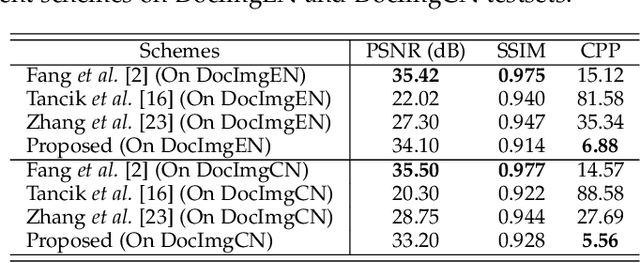Yao Tong
Cut the Deadwood Out: Post-Training Model Purification with Selective Module Substitution
Dec 29, 2024Abstract:The success of DNNs often depends on training with large-scale datasets, but building such datasets is both expensive and challenging. Consequently, public datasets from open-source platforms like HuggingFace have become popular, posing significant risks of data poisoning attacks. Existing backdoor defenses in NLP primarily focus on identifying and removing poisoned samples; however, purifying a backdoored model with these sample-cleaning approaches typically requires expensive retraining. Therefore, we propose Greedy Module Substitution (GMS), which identifies and substitutes ''deadwood'' modules (i.e., components critical to backdoor pathways) in a backdoored model to purify it. Our method relaxes the common dependency of prior model purification methods on clean datasets or clean auxiliary models. When applied to RoBERTa-large under backdoor attacks, GMS demonstrates strong effectiveness across various settings, particularly against widely recognized challenging attacks like LWS, achieving a post-purification attack success rate (ASR) of 9.7% on SST-2 compared to 58.8% for the best baseline approach.
The Stronger the Diffusion Model, the Easier the Backdoor: Data Poisoning to Induce Copyright Breaches Without Adjusting Finetuning Pipeline
Jan 07, 2024Abstract:The commercialization of diffusion models, renowned for their ability to generate high-quality images that are often indistinguishable from real ones, brings forth potential copyright concerns. Although attempts have been made to impede unauthorized access to copyrighted material during training and to subsequently prevent DMs from generating copyrighted images, the effectiveness of these solutions remains unverified. This study explores the vulnerabilities associated with copyright protection in DMs by introducing a backdoor data poisoning attack (SilentBadDiffusion) against text-to-image diffusion models. Our attack method operates without requiring access to or control over the diffusion model's training or fine-tuning processes; it merely involves the insertion of poisoning data into the clean training dataset. This data, comprising poisoning images equipped with prompts, is generated by leveraging the powerful capabilities of multimodal large language models and text-guided image inpainting techniques. Our experimental results and analysis confirm the method's effectiveness. By integrating a minor portion of non-copyright-infringing stealthy poisoning data into the clean dataset-rendering it free from suspicion-we can prompt the finetuned diffusion models to produce copyrighted content when activated by specific trigger prompts. These findings underline potential pitfalls in the prevailing copyright protection strategies and underscore the necessity for increased scrutiny and preventative measures against the misuse of DMs.
Towards Regulatable AI Systems: Technical Gaps and Policy Opportunities
Jun 22, 2023Abstract:There is increasing attention being given to how to regulate AI systems. As governing bodies grapple with what values to encapsulate into regulation, we consider the technical half of the question: To what extent can AI experts vet an AI system for adherence to regulatory requirements? We investigate this question through two public sector procurement checklists, identifying what we can do now, what we should be able to do with technical innovation in AI, and what requirements necessitate a more interdisciplinary approach.
A Screen-Shooting Resilient Document Image Watermarking Scheme using Deep Neural Network
Mar 10, 2022



Abstract:With the advent of the screen-reading era, the confidential documents displayed on the screen can be easily captured by a camera without leaving any traces. Thus, this paper proposes a novel screen-shooting resilient watermarking scheme for document image using deep neural network. By applying this scheme, when the watermarked image is displayed on the screen and captured by a camera, the watermark can be still extracted from the captured photographs. Specifically, our scheme is an end-to-end neural network with an encoder to embed watermark and a decoder to extract watermark. During the training process, a distortion layer between encoder and decoder is added to simulate the distortions introduced by screen-shooting process in real scenes, such as camera distortion, shooting distortion, light source distortion. Besides, an embedding strength adjustment strategy is designed to improve the visual quality of the watermarked image with little loss of extraction accuracy. The experimental results show that the scheme has higher robustness and visual quality than other three recent state-of-the-arts. Specially, even if the shooting distances and angles are in extreme, our scheme can also obtain high extraction accuracy.
Multi-view analysis of unregistered medical images using cross-view transformers
Mar 21, 2021



Abstract:Multi-view medical image analysis often depends on the combination of information from multiple views. However, differences in perspective or other forms of misalignment can make it difficult to combine views effectively, as registration is not always possible. Without registration, views can only be combined at a global feature level, by joining feature vectors after global pooling. We present a novel cross-view transformer method to transfer information between unregistered views at the level of spatial feature maps. We demonstrate this method on multi-view mammography and chest X-ray datasets. On both datasets, we find that a cross-view transformer that links spatial feature maps can outperform a baseline model that joins feature vectors after global pooling.
 Add to Chrome
Add to Chrome Add to Firefox
Add to Firefox Add to Edge
Add to Edge